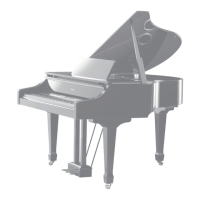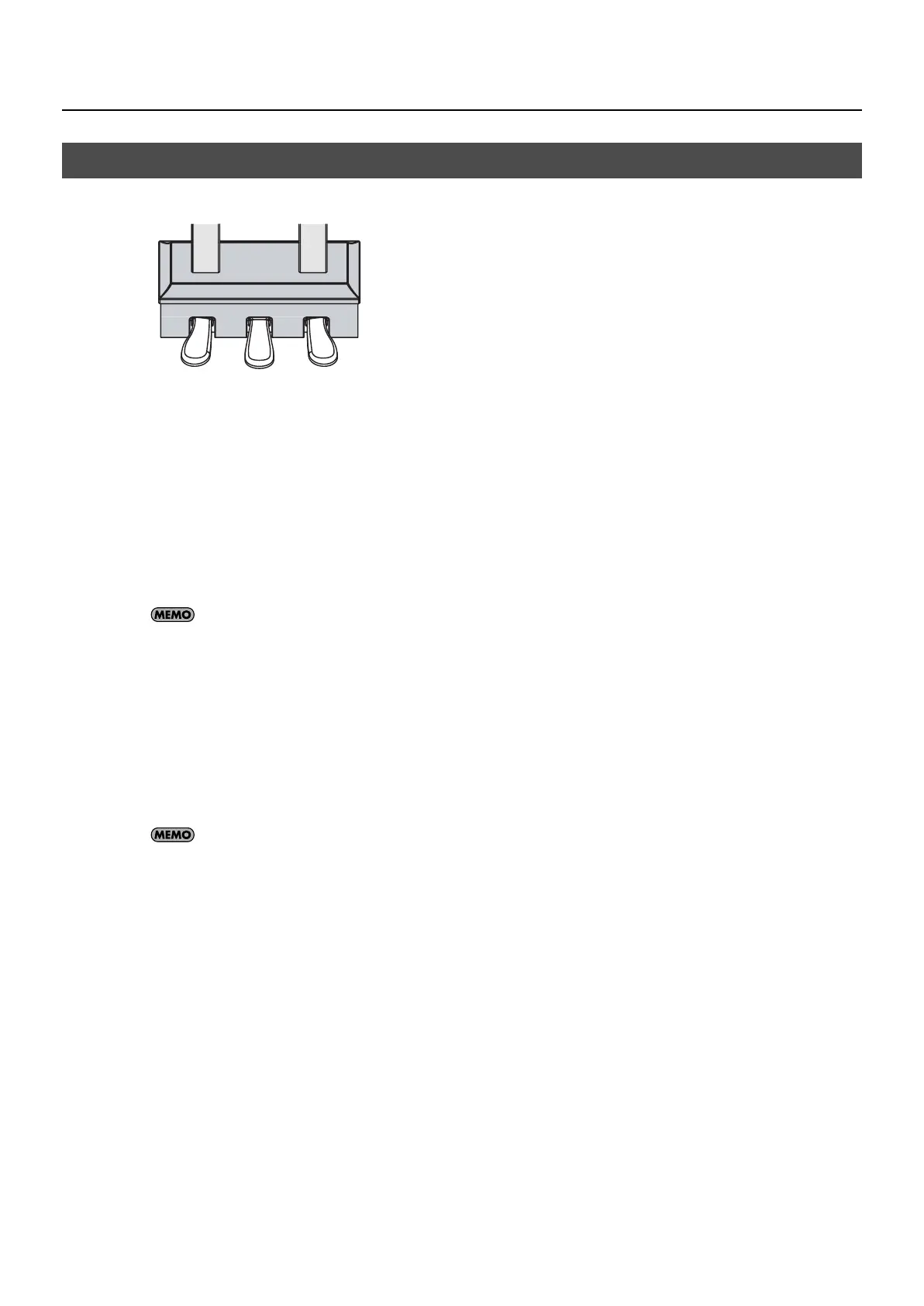20
Getting Ready
The pedals perform the following operations. You’ll use them mainly when playing piano.
fig.pedalName_e.eps
Damper Pedal (right pedal)
Use this pedal to sustain the sound.
While this pedal is held down, notes will be sustained for an extended time even if you release your fingers from the keyboard.
The length of sustain will change subtly depending on how deeply you press the pedal.
When you press the damper pedal of an acoustic piano, a slight noise is heard when the damper frees the strings, and a richly spacious
resonance is added by the strings that vibrate in sympathy with the strings of the notes you actually play.
The V-Piano Grand replicates the sound created when the damper releases the string (“damper noise”) and the sympathetic vibration
(“damper resonance”).
You can modify the sound of the damper releasing the string and the sound of the sympathetic vibration (p. 41).
Sostenuto Pedal (center pedal)
The notes you are pressing when this pedal is depressed will be sustained.
Soft Pedal (left pedal)
This pedal is used to make the sound softer.
Playing with the soft pedal depressed produces a sound that is not as strong as when otherwise played with the equivalent strength.
This is the same function as the left pedal of an acoustic piano.
The softness of the tone can be varied subtly by the depth to which you press the pedal.
You can switch the function of the sostenuto pedal and soft pedal (p. 39).
Using the Pedals
Soft Pedal
Sostenuto Pedal
Damper Pedal
V-Piano-Grand_e.book 20 ページ 2011年2月10日 木曜日 午後12時4分

